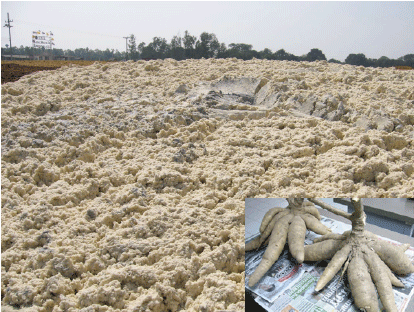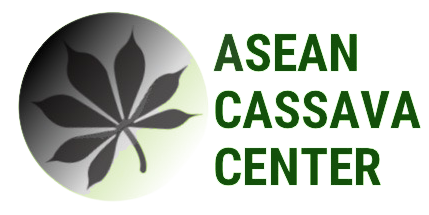Myanmar: Cassava Waste Management

Cassava Waste Management
Myanmar possesses various agriculturally-based biofuel resources, including crop resources like sugarcane, cassava, and oil-bearing crops such as palm oil. The government drafted a statement in 2008 allowing private entrepreneurs, state, and cooperative agencies to produce and procure biofuels. These include bioethanol, gasohol, biodiesel, biodiesel blend, and diesohol. Commercial bioethanol production commenced in 2008, primarily from sugarcane, with several large ethanol plants established. In the cassava industry, daily processing rates vary, with most processors operating in small batches. Starch conversion rates range from 23-35%, and wastewater management remains a challenge.
The policy supports the Cassava Cultivation technology in Myanmar
Regarding government policy, Myanmar is making strides in renewable energy development and energy efficiency. The National More Pure Fuel Policy, initiated in 2014, focuses on energy sector improvement. Despite challenges like limited technology, investment, and government attention, Myanmar's strategic location provides access to markets in neighboring countries like Thailand, China, and India. However, there is currently no specific government-driven initiative for biogas utilization in the cassava industry.
Strategies for knowledge and technology transfer:
To develop biogas technology, the proposal outlines initial conditions, agricultural context, and project planning. It includes site selection, technology choice, design considerations, and energy balance. It covers power plant design, construction, operation, maintenance, and economic analysis, emphasizing social acceptance and dissemination. The knowledge will be applied by organizing local training, translating materials into the local language, and establishing networks. The focus is on waste management tech in Myanmar's cassava starch industry, emphasizing low-cost, small-scale biogas production for small processors.
SWOT Analysis
Strengths in Myanmar's cassava sector include its role as a cash crop for smallholder farmers, rising international and domestic demand for cassava starch, and available virgin land for expansion. Weaknesses encompass limited budget and support, along with a small cultivation area compared to other major crops. Opportunities lie in addressing the country's energy needs through biogas technology, fostering industry development. Threats include insufficient R&D and human resources, environmental issues from processing waste, and weak government leadership in the cassava sector, which could hinder its growth and sustainability.
